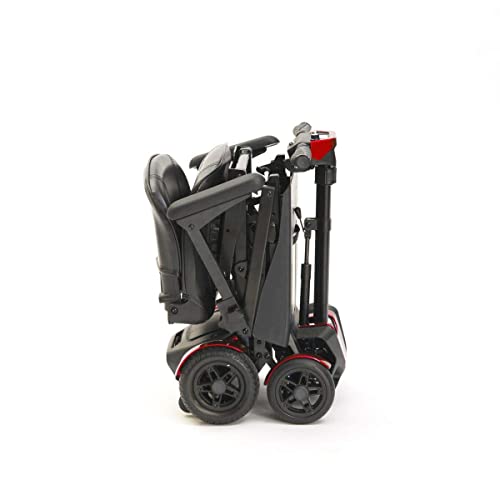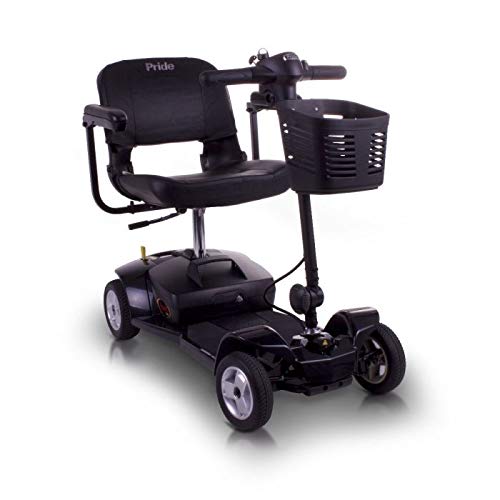A Proactive Rant About Electric Pedal Scooters
페이지 정보
작성자 Rashad 댓글 0건 조회 237회 작성일 24-11-28 05:20본문
 Electric Pedal Scooters
Electric Pedal ScootersA two-wheeled vehicle equipped with pedals, typically limited to speeds of 30 MPH or less. Registration, insurance and license are required (can vary by state).
E-scooters can be a fun and eco-friendly method of travel. They also reduce our dependence on fossil fuels. They are also a great option for those who need some assistance to move such as those who have leg or heart muscle issues.
1. Pedal Assist
Pedal-assist devices allow riders to cruise around without the need for continuous physical effort. The motor is controlled with a simple throttle press. It can provide a level of support that is adapted to the user's needs, ranging from minimal to maximum. The system is activated via sensors attached to the bike's cranks that senses the speed of pedal rotations (known as cadence) and sends an alert to the motor controller. The sensor alters the electric motor's power output according to this information to maintain an optimal ride experience. The rider is able to select the desired level of pedal assistance. The rider can also select the desired level of pedal assist.
Based on the type of electric scooter, there are different levels of assistance. Cadence sensors, which are the most commonly used, function using magnets placed near the pedals. When the magnet detects a rotation, it activates the motor and dispenses power to the cranks proportional to the pedaling rate. This is usually a smooth and intuitive system but some models use torque sensors, which can offer an easier and more customizable experience.
There are also kinds of e-bikes that work using a throttle, not an electronic torque sensor or cadence. These systems are generally more expensive, and riders must press a button on the handlebars in order to start the motor. This type of system is ideal for people with limited folding mobility scooter Electric who need to access motor power without the need for actual pedaling.
Understanding these technical specs is crucial to make an informed decision when choosing an electric scooter. You can evaluate the performance of an electric scooter by understanding the specifications of electric scooters, such as its power (wattage, voltage) and battery capacity and range, speed, brakes, suspension systems carrying mechanisms, and brakes (drum disc, disc, regenerative). Understanding the terms isn't just pedantry - it will give you the power to make the best choice for your unique requirements and needs!
2. Torque Sensor
Torque sensors are utilized in some foldable electric mobility scooter bikes to determine how much force is being exerted on the pedals by the rider. The data is sent to the motor controller, which then adjusts the power output to be in line with. This lets the rider get more assistance from the motor when doing more work for example, when climbing or descending. The motor can also reduce its power output if the rider has not put in a lot of effort, such for when driving on flat terrain or while in a stop.
Torque sensors work by incorporating strain gauges or other similar technologies into the bottom bracket in which the pedals and cranks are attached to the frame. The sensor measures the movement and transmits it to the motor controller. It then calculates the force being applied to pedals. This is a better method to determine the force the rider is pedaling which allows the motor to offer the best level of support.
A torque sensor can also detect subtler changes in the amount of force applied to the pedals compared to a cadence. This gives the rider a more natural feel and makes the motor seem like an extension of the rider, instead of simply supplying power based on the selected assist levels.
 In comparison a cadence sensor relies on magnets and sensors to determine if the crank arm is moving and when it is the motor is turned on to supply power. This could lead to a faster acceleration time but it does not give the same natural and smooth feeling that many riders desire.
In comparison a cadence sensor relies on magnets and sensors to determine if the crank arm is moving and when it is the motor is turned on to supply power. This could lead to a faster acceleration time but it does not give the same natural and smooth feeling that many riders desire.Another disadvantage of cadence sensors is that it only operates when the bike is moving, which can be problematic in rough terrain, where the pedals may move with little or no force because of loose dirt or uneven ground. It also means that the rider has to wait for the motor to engage before they can begin accelerating which can be difficult when starting from a standstill or when riding downhill.
3. Lean-To-Steer
If your child wants to speed up the journey to school or just scoot around the neighborhood, they need to master the art of steering their scooter. Many kick scooters are available in two-wheeled versions that require you turn the handlebars as if you were riding the handlebars of a bicycle, or three-wheeled models that are more stable for preschoolers and elementary school kids.
They "lean-to steer" scooters operate by having the child shift their weight in a certain direction in order to move the wheels that way, which is similar to a skateboard. This system of steering may seem unusual to adults, but kids can easily grasp it. It's also more comfortable for young children as they don't need to use their hands to steer.
In addition, a lean-to-steer system is more robust on uneven surfaces and permits smooth, gradual turns. This makes it the ideal scooter for children who want to ride along sidewalks or on roads.
Drobnjak explained that scooters improve gross motor development because they strengthen the supporting leg and hip. This improves balance and coordination. The propelling leg increases strength through the quadriceps, hamstrings, and the calf muscles. In addition the leaning and weight-shifting abilities that kids learn from scooting transfer to other activities, such as surfing, skating and skiing, Drobnjak said.
A good scooter will feature a height-adjustable steering wheel and a wide range of weight limits, meaning it can grow with your child as they grow. It should be made of durable materials that are able to stand up to wear and tear.
One excellent example of this kind of equipment is the Micro Maxi scooter, which has a 3 wheeled electric mobility scooter-wheel design as well as lean-to-steer technology. The wheels are designed to glide over sidewalk cracks and bumps with ease, providing more stability for younger kids while riding their scooters. Lean-to-steer technology also allows children to adjust their riding on the fly by simply shifting their body weight in a particular direction. This allows them to have a more intuitive riding experience which is quicker, safer and more enjoyable than traditional scooters.
4. Large Storage
The Large Storage is a utility item that can be used to add Tier-2 attachment slots to the Astroneer's player base. It can hold up to 24 small electric mobility scooter objects, and it can be placed in horizontal or vertical positions. It can be positioned in a way so that two of the slots are angled downwards, making it suitable for Floodlight. All inventory from multiple mounted Large Storage Modules will also be unified and interoperable as one module. As long as the module is running, it will also provide power to an RTG platform or another powered platform. Find out how it works in the video below!
댓글목록
등록된 댓글이 없습니다.

